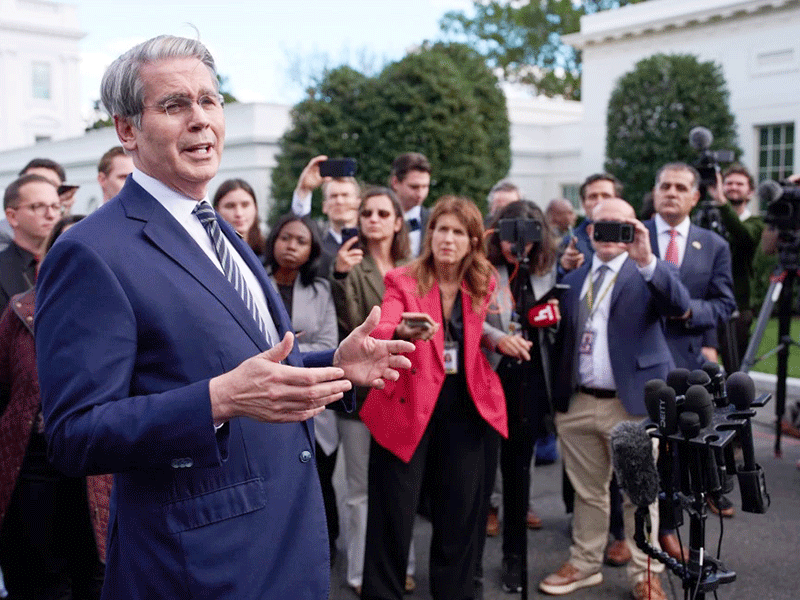 |
| Treasury Secretary Scott Bessent speaks with reporters at the White House, Wednesday in Washington. --Photo AP |
US hits US$38 trillion in debt, after the fastest accumulation of US$1 trillion outside of the pandemic
WASHINGTON (AP) -- In the midst of a federal government shutdown, the US government’s gross national debt surpassed US$38 trillion Wednesday, a record number that highlights the accelerating accumulation of debt on America’s balance sheet.
It’s also the fastest accumulation of a trillion dollars in debt outside of the COVID-19 pandemic — the US hit US$37 trillion in gross national debt in August this year.
The US$38 trillion update is found in the latest Treasury Department report, which logs the nation’s daily finances.
Kent Smetters of the University of Pennsylvania’s Penn Wharton Budget Model, who served in President George W. Bush’s Treasury Department, told The Associated Press that a growing debt load over time leads ultimately to higher inflation, eroding Americans’ purchasing power.
The Government Accountability Office outlines some of the impacts of rising government debt on Americans — including higher borrowing costs for things like mortgages and cars, lower wages from businesses having less money available to invest, and more expensive goods and services.
“I think a lot of people want to know that their kids and grandkids are going to be in good, decent shape in the future — that they will be able to afford a house,” Smetters said. “That additional inflation compounds” and erodes consumers’ purchasing power, he said, making it less possible for future generations to achieve home ownership goals. The Trump administration says its policies are helping to slow government spending and will shrink the nation’s massive deficit. A new analysis by Treasury Department officials states that from April to September, the cumulative deficit totaled US$468 billion. In a post on X Wednesday, Treasury Secretary Scott Bessent said that’s the lowest reading since 2019.
“During his first eight months in office, President Trump has reduced the deficit by US$350 billion compared to the same period in 2024 by cutting spending and boosting revenue,” White House spokesman Kush Desai said in a statement, adding that the administration would pursue robust economic growth, lower inflation, tariff revenue, lower borrowing costs and cuts to waste, fraud and abuse.
The Joint Economic Committee estimates that the total national debt has grown by US$69,713.82 per second for the past year.
Michael Peterson, chair and CEO of the Peter G. Peterson Foundation, said in a statement that “reaching US$38 trillion in debt during a government shutdown is the latest troubling sign that lawmakers are not meeting their basic fiscal duties.”
“Along with increasing debt, you get higher interest costs, which are now the fastest growing part of the budget,” Peterson added. “We spent US$4 trillion on interest over the last decade, but will spend US$14 trillion in the next ten years. Interest costs crowd out important public and private investments in our future, harming the economy for every American.”
The US hit US$34 trillion in debt in January 2024, US$35 trillion in July 2024 and US$36 trillion in November 2024.
(Latest Update October 24, 2025)
|